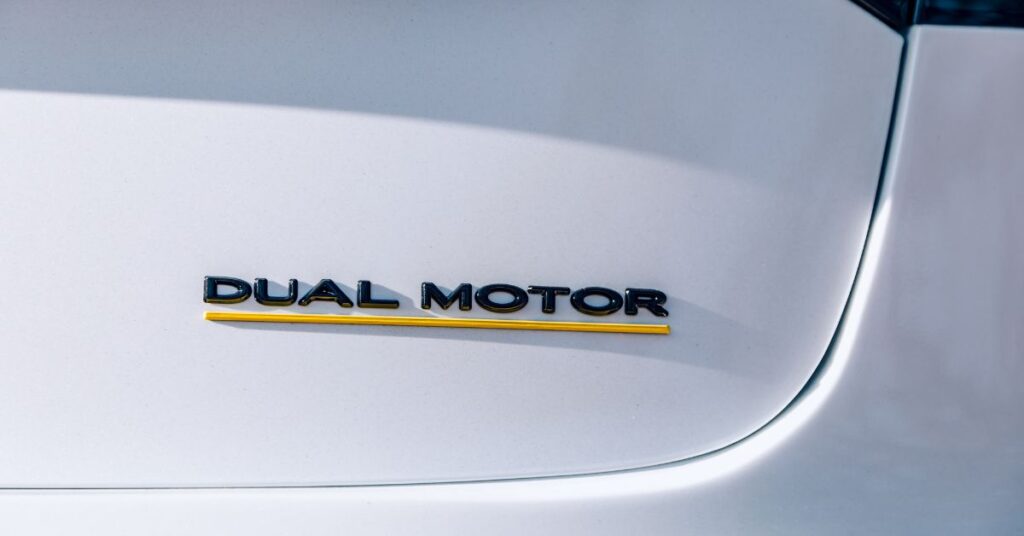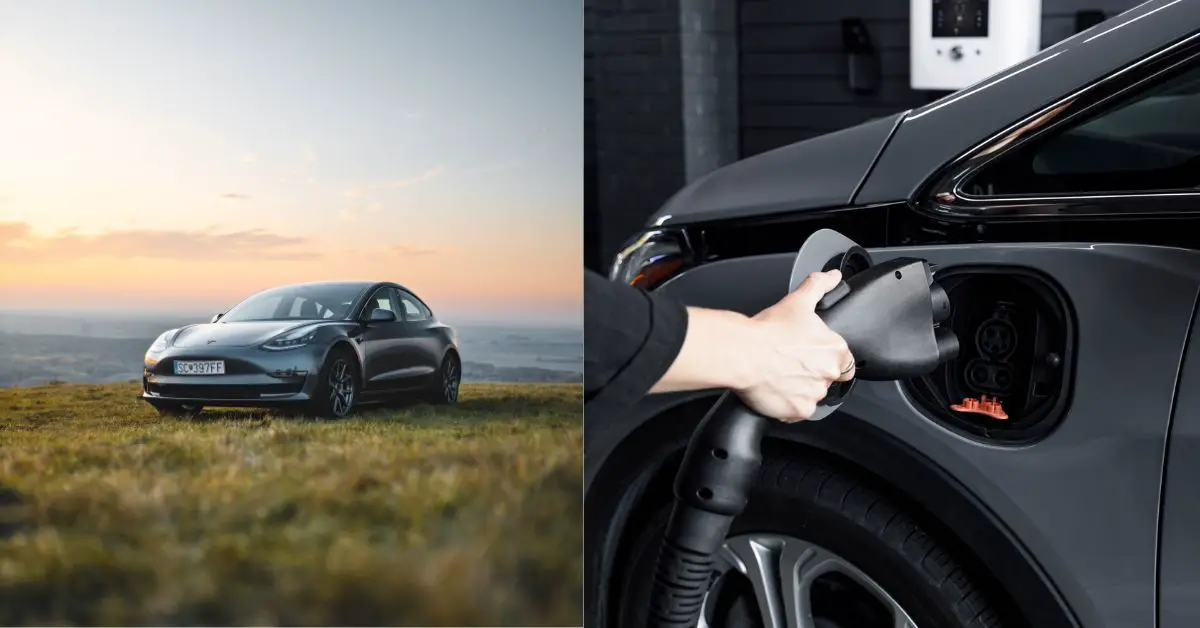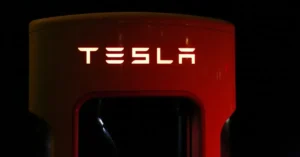Chevy Bolt vs Tesla Model 3 – what’s the better car? Let’s find out today!
Table of Contents
Electric vehicles have gained popularity in recent years as more consumers are looking for sustainable and environmentally-friendly alternatives to traditional gasoline-powered cars.
Chevy Bolt and Tesla Model 3 are two of the most prominent electric vehicles on the market, offering a combination of performance, design, and features. The Chevy Bolt was introduced in 2017 as a compact electric car with a range of over 250 miles, while the Tesla Model 3 was released in 2018 as a mid-size sedan with a range of over 300 miles.
In this article, we will compare the two electric vehicles and examine their design, features, performance, driving experience, cost, and value. Our goal is to help buyers make an informed decision when choosing between the Chevy Bolt and the Tesla Model 3.
Chevy Bolt vs Tesla Model 3
The Chevy Bolt and Tesla Model 3 are two popular electric cars that offer impressive performance, driving range, and features. Here’s how they compare in several key areas:
Design and Features

Design and features are important factors to consider when comparing the Chevy Bolt and Tesla Model 3. Both cars have distinct exterior and interior designs, safety features, and infotainment systems.
Starting with the exterior design, the Chevy Bolt has a boxy, hatchback shape with smooth lines and minimal creases. It features a modern and youthful design with a prominent grille, narrow headlights, and a sloping roofline. On the other hand, the Tesla Model 3 has a more sleek and sporty appearance with a low-slung profile, a minimalist front fascia, and a distinctive sloping rear roofline. The Model 3 also comes with 18 or 19-inch wheels, while the Bolt has 17-inch wheels as standard.
Moving on to the interior, the Chevy Bolt has a spacious and airy cabin with room for up to five passengers. It features a contemporary design with a mix of soft-touch materials, hard plastics, and cloth or leatherette upholstery. The Bolt also comes with a 10.2-inch touchscreen display, which controls the infotainment system, climate control, and other features.
The Tesla Model 3 has a more upscale and luxurious interior with a minimalist design, featuring a large 15-inch touchscreen display that controls almost all vehicle functions. The Model 3’s cabin is also more spacious than the Bolt’s, with a more premium feel thanks to higher-quality materials and finishes. Additionally, the Model 3 has a glass roof, which provides a panoramic view of the surroundings.
Both the Chevy Bolt and Tesla Model 3 come equipped with a wide range of safety features, such as automatic emergency braking, forward collision warning, lane departure warning, and blind-spot monitoring. However, the Model 3 also includes an advanced Autopilot system, which adds self-driving capabilities, adaptive cruise control, and automatic lane changes.
In terms of infotainment, both the Bolt and Model 3 offer a range of standard features, including Bluetooth, Wi-Fi, smartphone integration, and a premium sound system. The Model 3’s touchscreen display, however, is larger and more intuitive, offering a range of features such as live traffic and navigation, internet connectivity, and access to Tesla’s online services.
Overall, the Chevy Bolt and Tesla Model 3 have different designs and features that cater to different buyers’ preferences. While the Bolt offers a more practical and budget-friendly option, the Model 3 provides a more premium and high-tech driving experience.
Performance

Performance is a key factor to consider when comparing the Chevy Bolt and Tesla Model 3. Both vehicles offer impressive acceleration, range, and charging capabilities, but differ in terms of powertrain and driving experience.
Starting with the powertrain, the Chevy Bolt features a single electric motor that generates 200 horsepower and 266 lb-ft of torque. It can accelerate from 0 to 60 mph in around 6.5 seconds, which is quick for a compact car. The Bolt also has a 66 kWh battery pack that provides an EPA-rated range of 259 miles on a single charge.
The Tesla Model 3, on the other hand, is available in three variants, each with a different powertrain and performance level. The standard rear-wheel-drive Model 3 features a single electric motor that delivers 221 horsepower and 307 lb-ft of torque. It can accelerate from 0 to 60 mph in 5.3 seconds and has an EPA-rated range of 263 miles on a single charge.
The long-range and performance variants of the Model 3 are equipped with dual electric motors that provide all-wheel drive and better performance. The long-range version generates 346 horsepower and 389 lb-ft of torque, accelerating from 0 to 60 mph in 4.2 seconds and offering an EPA-rated range of 353 miles on a single charge. The performance version delivers 450 horsepower and 471 lb-ft of torque, accelerating from 0 to 60 mph in just 3.1 seconds, making it one of the quickest cars on the road. Its EPA-rated range is 315 miles on a single charge.
When it comes to charging, both the Chevy Bolt and Tesla Model 3 are compatible with Level 1, Level 2, and DC fast charging. The Bolt can recharge up to 80% of its battery capacity in 60 minutes using a DC fast charger, while the Model 3 can recharge up to 80% in 40 minutes using a Supercharger. The Model 3 also has a unique feature called “regenerative braking,” which helps to recharge the battery while driving and increases the car’s overall range.
Overall, the Tesla Model 3 offers better performance and range compared to the Chevy Bolt, thanks to its more powerful electric motors and larger battery pack. However, the Bolt is still a solid performer and offers a good balance of performance, range, and charging capabilities for its price point.
Driving Experience
The driving experience is an essential factor to consider when comparing the Chevy Bolt and Tesla Model 3. Both cars offer a smooth and quiet ride, but differ in terms of handling, steering, and overall driving dynamics.
Starting with the Chevy Bolt, the car’s high seating position and low hood make for good visibility, making it easy to maneuver in tight spaces. The Bolt’s suspension system is well-tuned, providing a comfortable and stable ride, even on rough roads. The steering is light and direct, making the Bolt easy to handle and park. Additionally, the Bolt has a low center of gravity due to the placement of its battery pack, which helps to enhance its stability and cornering ability.
The Tesla Model 3, on the other hand, offers a more engaging and exciting driving experience, thanks to its more powerful electric motors and lower center of gravity. The car’s responsive acceleration and quick steering make it easy to navigate through traffic and handle tight turns. The Model 3 also has a regenerative braking system, which helps to recharge the battery while driving and enhances the car’s handling and control.
Another key factor in the driving experience is the car’s noise level. Both the Bolt and Model 3 offer a quiet and peaceful ride, thanks to their electric powertrains, which eliminate the engine noise and vibrations found in traditional gasoline-powered cars.
Finally, the Tesla Model 3 offers a unique feature called “Autopilot,” which provides advanced driver assistance systems, such as adaptive cruise control, lane departure warning, and automatic emergency braking. Autopilot also includes a feature called “Summon,” which allows the car to park itself and come to the driver’s location, making it more convenient and hassle-free.
Overall, the Tesla Model 3 offers a more engaging and exciting driving experience, thanks to its more powerful electric motors and advanced technology features such as Autopilot. However, the Chevy Bolt offers a comfortable and stable ride, making it a good option for those looking for a practical and easy-to-handle car.
Cost and Value

Cost and value are important factors to consider when comparing the Chevy Bolt and Tesla Model 3. Both cars offer an all-electric powertrain, but differ in terms of price and overall value.
Starting with the Chevy Bolt, the car has a starting price of around $31,000, making it one of the most affordable electric cars on the market. However, this price does not include any available tax incentives or rebates, which can lower the car’s overall cost. The Bolt’s long-range variant is more expensive, with a starting price of around $38,000. Despite being cheaper than the Model 3, the Bolt still offers impressive performance, range, and features, making it a great value for those looking for an affordable electric car.
The Tesla Model 3, on the other hand, is more expensive, with a starting price of around $42,000. The long-range and performance variants are even more expensive, with starting prices of around $50,000 and $60,000, respectively. However, the Model 3 offers better performance, range, and features compared to the Bolt, making it a more luxurious and high-end electric car.
Both the Chevy Bolt and Tesla Model 3 are eligible for federal tax incentives, which can lower the car’s overall cost by up to $7,500. Additionally, some states offer additional incentives or rebates for electric cars, making the Bolt and Model 3 even more affordable.
When it comes to the car’s overall value, the Tesla Model 3 offers more luxury and advanced technology features, such as Autopilot and a more advanced infotainment system. The Model 3 also has a more extensive Supercharger network, making it easier and faster to recharge the battery on long trips. On the other hand, the Chevy Bolt offers a practical and efficient electric car with a good balance of performance, range, and features, making it a great value for those looking for an affordable electric car.
In summary, the Chevy Bolt is a more affordable electric car that offers great value for its price point, while the Tesla Model 3 is a more luxurious and high-end electric car that offers better performance, range, and advanced technology features, but at a higher cost. The choice between the two ultimately depends on the buyer’s preferences and budget.
Pros and Cons
When comparing the Chevy Bolt and Tesla Model 3, there are several pros and cons to consider for each car. Here are some of the most important:
Chevy Bolt Pros:
- Affordable starting price
- Long driving range of up to 259 miles on a single charge
- Roomy and comfortable interior with good visibility
- Practical hatchback design with ample cargo space
- Smooth and stable ride, with responsive handling and steering
Chevy Bolt Cons:
- Limited availability of public fast-charging stations
- Interior materials and build quality are not as high-end as the Model 3
- Some may find the exterior design to be uninspiring
Tesla Model 3 Pros:
- More powerful electric motors, with faster acceleration and higher top speeds
- Longer driving range of up to 353 miles on a single charge
- Luxurious and high-end interior, with premium materials and advanced technology features
- Advanced driver assistance features, such as Autopilot and Summon
- Extensive Supercharger network for fast and convenient recharging on long trips
Tesla Model 3 Cons:
- Higher starting price compared to the Bolt
- Some may find the low-slung seating position and hood design to be less practical than the Bolt’s high seating position and low hood
- Less cargo space than the Bolt due to the Model 3’s traditional sedan design
- Firm suspension and steering may be less comfortable for some drivers
Overall, the Chevy Bolt is a practical and affordable electric car that offers good value for its price point, with a spacious and comfortable interior, long driving range, and responsive handling.
The Tesla Model 3, on the other hand, is a more luxurious and high-end electric car that offers better performance, longer driving range, and advanced technology features, but at a higher cost. The choice between the two ultimately depends on the buyer’s preferences and budget.
FAQ
Is Chevy Bolt better than Model 3?
The Tesla Model 3 is generally regarded as a superior vehicle to the Chevy Bolt. The Model 3 has a faster top speed and greater range than the Bolt, as well as a more appealing design.
The Bolt produces slightly more torque than the Model 3, but it does not charge as quickly or as stylishly as some of its competitors, including the Model 3.
Why did Chevy discontinue the Bolt?
The Chevy Bolt and Bolt EUV were phased out due to a large recall involving the EVs’ battery packs, as well as a transition from the Bolt’s electric architecture to General Motors’ new Ultium platform.
In addition, due to high demand for electric vehicles, GM reduced the price of the 2023 Chevy Bolt EV and Bolt EUV by an average of 17 percent in June 2022. The Chevrolet Bolt appears to be on its last legs.
Are Chevy bolts reliable?
The National Highway Traffic Safety Administration gave the 2023 Chevrolet Bolt five out of five stars for overall safety, but Consumer Reports expects it to be much less reliable than the average new car.
Consumer Reports gave it a score of 78, putting it in the same league as the Tesla Model 3. However, Chevy Bolt battery fires have lowered Consumer Reports’ recommended rating.
Is Chevy Bolt EUV worth buying?
The 2023 Chevrolet Bolt EUV has many of the characteristics you want in an electric utility vehicle, such as plenty of space, quick acceleration, and a respectable driving range. It is also less expensive than competitors while still providing adequate range, making it an appealing option for commuters and others who do not require extensive range between charges.
However, some buyers may be put off by the slow charging speeds.
Why are Chevy bolts so cheap?
The Chevy Bolt EV and EUV are affordable because Chevrolet has reduced the price of both body styles by $6K, making them thousands of dollars less than they were the previous model year.
The prices of the 2023 Bolt EV and EUV have since risen by $900 and $600, respectively, but they remain lower than in 2022 and qualify for the full $7500 federal tax credit.
In addition, the price of the 2022 Chevy Bolt EUV has been reduced by $6,300 to aid in its recovery from a production halt due to faulty batteries.
What is the lifespan of a Chevy Bolt battery?
A new battery in the Chevy Bolt EV or Bolt EUV is guaranteed to last at least 8 years or 100,000 miles. According to posts on the Chevrolet Bolt EV Forum, the average Chevy battery degrades at a rate of 6 to 8% after 100,000 miles.
Batteries typically last 3-5 years, but this varies depending on the type of battery, weather conditions, driving habits, and other factors. Chevy GM provides an 8-year, 100,000-mile warranty, whichever comes first, and after 100,000 miles, each kWH battery capacity has been used for 4,755 miles.





